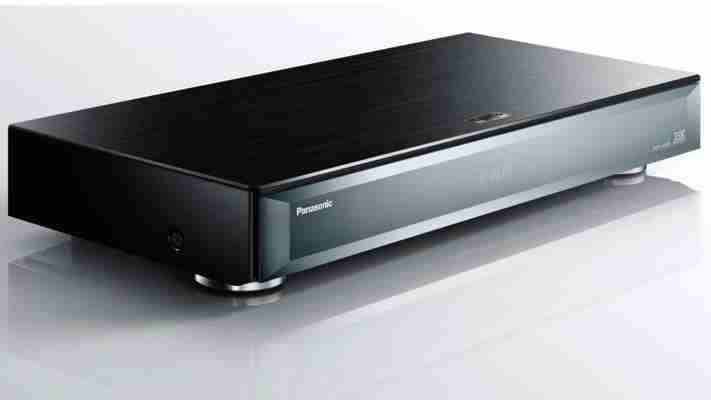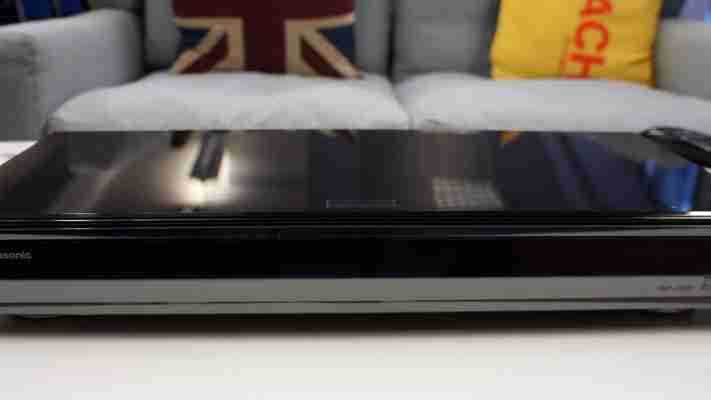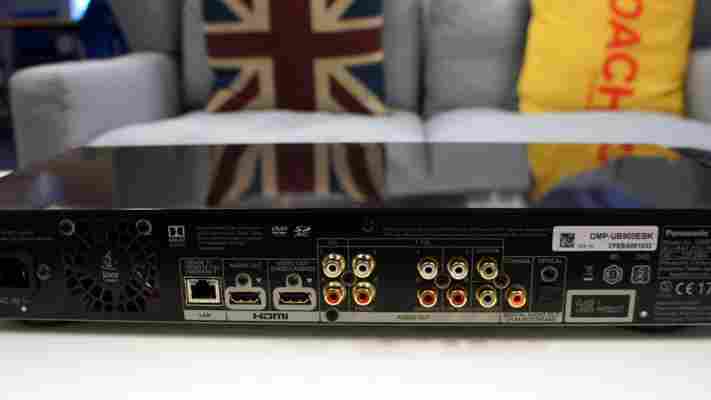Ultra HD Blu-ray has finally arrived. However, just like Blu-ray’s original launch, only two manufacturers currently have UHD Blu-ray players you can actually buy, leaving you with a choice of either Samsung’s UBD-K8500 or Panasonic’s DMP-UB900 on test here.

Both require a considerable investment, though, as each one is considerably more expensive than your average Blu-ray player - Samsung’s, for instance, costs £430 while this Panasonic costs a whopping £600. They are, however, aimed at a slightly different audience - and with good reason.
Connections and Audio
Panasonic’s Ultra HD Blu-ray player, for instance, comes with all the bells and whistles you’d expect from a top of the line device. That includes two HDMI outputs, one of which is completely dedicated to audio. By isolating the sound from the video stream, Panasonic claims it can reduce clock jitter when it’s connected to a separate amp. This allegedly reduces the number of errors and unwanted noise, but we’ve never really found this to be a problem on ordinary Blu-ray players, so you’ll likely only really care about this feature if you’re a hardened cinephile.

Even if you don’t end up using the second HDMI output, though, the DMP-UB900 also has 7.1 analogue outputs to carry surround sound. In fact, it’s this intense focus on audio delivery that really separates the DMP-UB900 from Samsung’s Ultra HD Blu-ray player, as you’ll also find Panasonic’s included support for high-resolution audio with its 192kHZ/32-bit DAC, as well as FLAC and DSD playback across DLNA or USB storage. What it does lack, however, is SACD or DVD-A discs, which is a bit of a surprise considering the rest of its capabilities.

Other audiophile-friendly features include the LAN Common Mode Filter, which is meant to shield the DMP-UB900 from electronic noise created by external devices. As a result, the DMP-UB900 will likely be right up your street if you have a high-quality audio setup to match it, but those with ordinary TV setups will find all this distinctly overkill.
Design
The DMP-UB900 also trumps Samsung’s player on looks, as there’s no denying this is a classy-looking Blu-ray player, even if it is very quick to pick up dust and fingerprints. Out of the box, though, its glossy, glass-cut front looks incredibly elegant, and its display is clear and easy to read. If it becomes too distracting, though, you can always dim the display to make it more subtle.
Stowed away in an AV cabinet, the fingerprint problem probably won’t be so much of an issue, but it’s worth noting that it is considerably taller than Samsung’s UBD-K8500, which looks a lot sleeker by comparison. However, this is due to all the extra connections on the rear, so its size can be excused.
The remote control is a little busy for my liking, especially compared to the simpler remote controls included with Samsung’s Ultra HD Blu-ray player. There are some useful buttons here, though, such as the skip buttons that let you jump back in 10s increments or jump forward by a minute, as this is often more convenient than attempting to skip by entire chapters.
Image Quality
To truly take advantage of the DMP-UB900, you’ll need to pair it with a 4K TV (preferably one that supports High Dynamic Range or HDR), as well as some actual Ultra HD content to watch on it. Provided you have these two prerequisites, the DMP-UB900 will not disappoint.
Panasonic takes care of the latter half by bundling in Ultra HD copies of Mad Max: Fury Road and San Andreas with the player. Considering Ultra HD Blu-rays are going to cost around £20 apiece, it makes the overall cost marginally more palatable. Samsung, by comparison, only bundles in an Ultra HD disc of The Martian.
The DMP-UB900 also supports the HDR BT.2020 wide colour gamut and 10-bit colour, so you’ll need to check whether your TV supports this as well to get the most out of it. Thankfully, this won’t be too much of a problem for new buyers, as the DMP-UB900 has been recognised by the Ultra HD Alliance as meeting the requirements for ‘Ultra HD Premium’, so all you need to do is look out for the Ultra HD Premium badge on this year’s TVs and you’re all set for the best UHD experience available. If that wasn’t enough, its video performance is THX certified, too.
Needless to say, the DMP-UB900 produces wonderful images when watching Ultra HD HDR Blu-rays. As expected, there’s a much wider range of colours on display, making the wide-angled destruction scenes in San Andreas look far more immersive, and there’s a lot more detail in the highlights and shadows as well thanks to HDR’s higher brightness and contrast levels. When you get a sun flare, for instance (or see the sun shining off Dwayne Johnson’s bald noggin), HDR won’t clip the bright centre of the image, allowing you to see more detail and fewer halo effects in the process.
I also watched The Martian on Ultra HD Blu-ray, and scenes transitioned beautifully from the bright, orange-hued shots of Mars to the darker mission control scenes. Switch off HDR, though, and scenes look far flatter and more subdued, with colours losing their depth and sense of vibrancy. It’s fair to say that once you’ve watched something in HDR, you never want to go back.
Truth be told, some people might not get the initial ‘wow factor’ they experienced when they first made the move from DVD to Blu-ray. The effect is certainly less pronounced when moving from Blu-ray to Ultra HD Blu-ray, but the jump in resolution will largely be dependent on the size of your TV, your viewing distance and the content itself. Not all Ultra HD Blu-rays will have actually been shot in 4K originally, so watch out for discs that have been upscaled from lower-resolution masters. That said, the UBD-900 performs well with non-Ultra HD content, too, as its 4K Direct Chroma up-scaling worked wonders with our standard Blu-ray discs.
Another thing to point out is that many 4K TVs won’t have HDR turned on by default, so you might have to root around in your TV’s menu settings to get the best image quality. Naturally, this all happens automatically through Viera Link when you connect the DMP-UB900 to a Panasonic TV, but I had to turn it on manually when I paired it with a Samsung TV. Read page 2 for more on Smart Features and my Conclusion .
